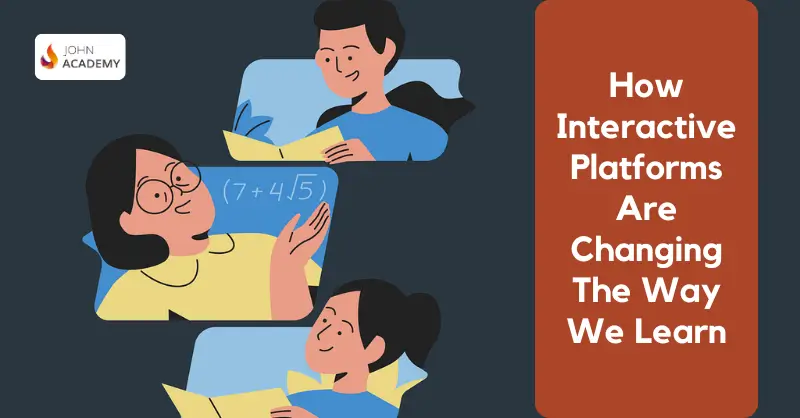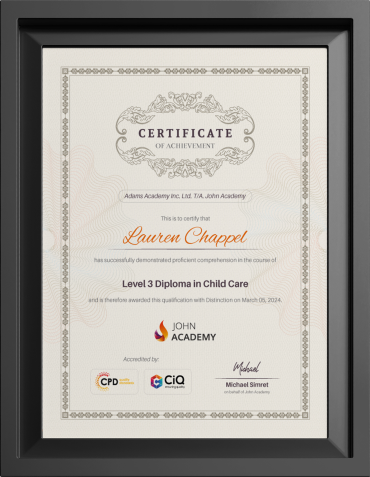
Education has come a long way from the traditional classroom setting with chalkboards and textbooks. Today, interactive platforms are revolutionizing the way we learn, offering a more dynamic and engaging experience. But what exactly are interactive platforms, and how are they transforming education? Let’s dive in and explore how these modern tools are reshaping the learning landscape.
The Rise of Interactive Learning Platforms
Interactive learning platforms are digital tools that facilitate a more engaging, hands-on approach to education. These platforms encompass a wide range of technologies, from online courses with video lectures to websites that contain university notes of thousands of different students from hundreds of universities across the country.
With the rise of the internet and advancements in technology, these platforms have become increasingly accessible, allowing learners from all over the world to benefit from them.
Remember when learning was all about sitting quietly in a classroom, listening to a teacher drone on? Interactive platforms turn this model on its head by actively involving learners in the process. Instead of passively absorbing information, students can now engage with content, participate in discussions, and even create their own learning experiences. This shift from passive to active learning is one of the key ways interactive platforms are changing education.
Personalised Learning Experiences
One of the most significant advantages of interactive platforms is the ability to personalise the learning experience. Traditional education often follows a one-size-fits-all approach, where every student is expected to learn at the same pace and in the same way. But as we all know, everyone learns differently. Some people are visual learners, while others prefer hands-on activities or reading. Interactive platforms recognise this diversity and offer tailored learning experiences to meet individual needs.
For instance, many online learning platforms use algorithms to analyse a student’s progress and adapt the content accordingly. If a student is struggling with a particular concept, the platform can provide additional resources or exercises to help them understand. On the other hand, if a student is excelling, the platform can offer more challenging material to keep them engaged. This personalised approach not only makes learning more effective but also more enjoyable.
Making Learning Fun with Gamification
Who says learning can’t be fun? Interactive platforms are incorporating elements of gamification to make education more enjoyable and motivating. Gamification involves applying game design principles, such as rewards, challenges, and leaderboards, to non-game contexts like education. By turning learning into a game, these platforms make it easier for students to stay engaged and motivated.
Think about it: would you rather spend an hour memorizing vocabulary from a list, or would you prefer playing a game that rewards you for correctly using new words in sentences? The latter is what gamified learning offers. Platforms like Duolingo, for example, have mastered the art of gamification in language learning. Users earn points, unlock levels, and receive virtual rewards as they progress, making the process of learning a new language feel like a fun and exciting challenge.
Gamification also introduces a healthy level of competition, whether it’s competing against oneself to improve or against others on a leaderboard. This competitive element can drive students to put in extra effort, ultimately leading to better learning outcomes.
Collaboration and Social Learning
Another way interactive platforms are transforming education is by fostering collaboration and social learning. In a traditional classroom, collaboration is often limited to group projects or class discussions. However, interactive platforms break down geographical barriers, allowing students from different parts of the world to connect and collaborate in real time.
Social learning is a key component of many interactive platforms. Features like discussion forums, peer reviews, and group projects encourage students to work together, share ideas, and learn from one another. This not only enhances the learning experience but also helps students develop important skills like communication, teamwork, and critical thinking.
Moreover, these platforms often provide opportunities for learners to interact with experts and industry professionals, offering insights and perspectives that might not be available in a traditional classroom setting. Whether it’s through live webinars, Q&A sessions, or virtual office hours, students can engage with their instructors and peers in meaningful ways, making the learning experience richer and more dynamic.
Flexibility and Accessibility
One of the most transformative aspects of interactive platforms is the flexibility they offer. Traditional education often requires students to adhere to a rigid schedule, which can be challenging for those with other commitments, such as work or family. Interactive platforms, on the other hand, allow learners to study at their own pace and on their own schedule.
This flexibility is particularly beneficial for adult learners who may be balancing education with other responsibilities. Whether it’s taking an online course in the evening after work or fitting in a quick study session during a lunch break, interactive platforms make it easier for people to pursue education without sacrificing other aspects of their lives.
Furthermore, these platforms are often more accessible than traditional education. They can be accessed from anywhere with an internet connection, making education available to people in remote or underserved areas. This increased accessibility is helping to democratize education, providing opportunities for learning to those who might not otherwise have access.
What Will Happen in the Future of Learning?
So, where do we go from here? As technology continues to evolve, so too will the capabilities of interactive platforms. We’re already seeing the integration of advanced technologies like artificial intelligence (AI) and virtual reality (VR) into education, and the potential for these tools is enormous.
AI, for example, could take personalised learning to the next level by offering even more tailored experiences based on a student’s unique learning style and progress. Imagine a learning platform that not only adapts to your needs but also anticipates them, offering the right content at the right time to maximize your understanding.
Virtual reality, on the other hand, could revolutionize hands-on learning by providing immersive experiences that are currently impossible in a traditional classroom. Imagine studying ancient history by virtually walking through the streets of Rome or learning about marine biology by diving into a simulated ocean. The possibilities are endless, and the future of learning is likely to be more interactive and engaging than we can currently imagine.
Conclusion
Interactive platforms are undeniably changing the way we learn. By offering personalised, engaging, and flexible learning experiences, these platforms are making education more accessible and effective for people around the world. Interactive platforms are at the forefront of educational innovation, whether through gamification, social learning, or the integration of advanced technologies.
As we look to the future, it’s clear that these platforms will continue to play a significant role in shaping how we learn. The classroom of tomorrow may be very different from what we’re used to, but one thing is certain: interactive platforms are here to stay, transforming education for the better. So, the next time you log into an online course or open a learning app, remember that you’re part of a global movement changing the face of education, one interactive lesson at a time.

